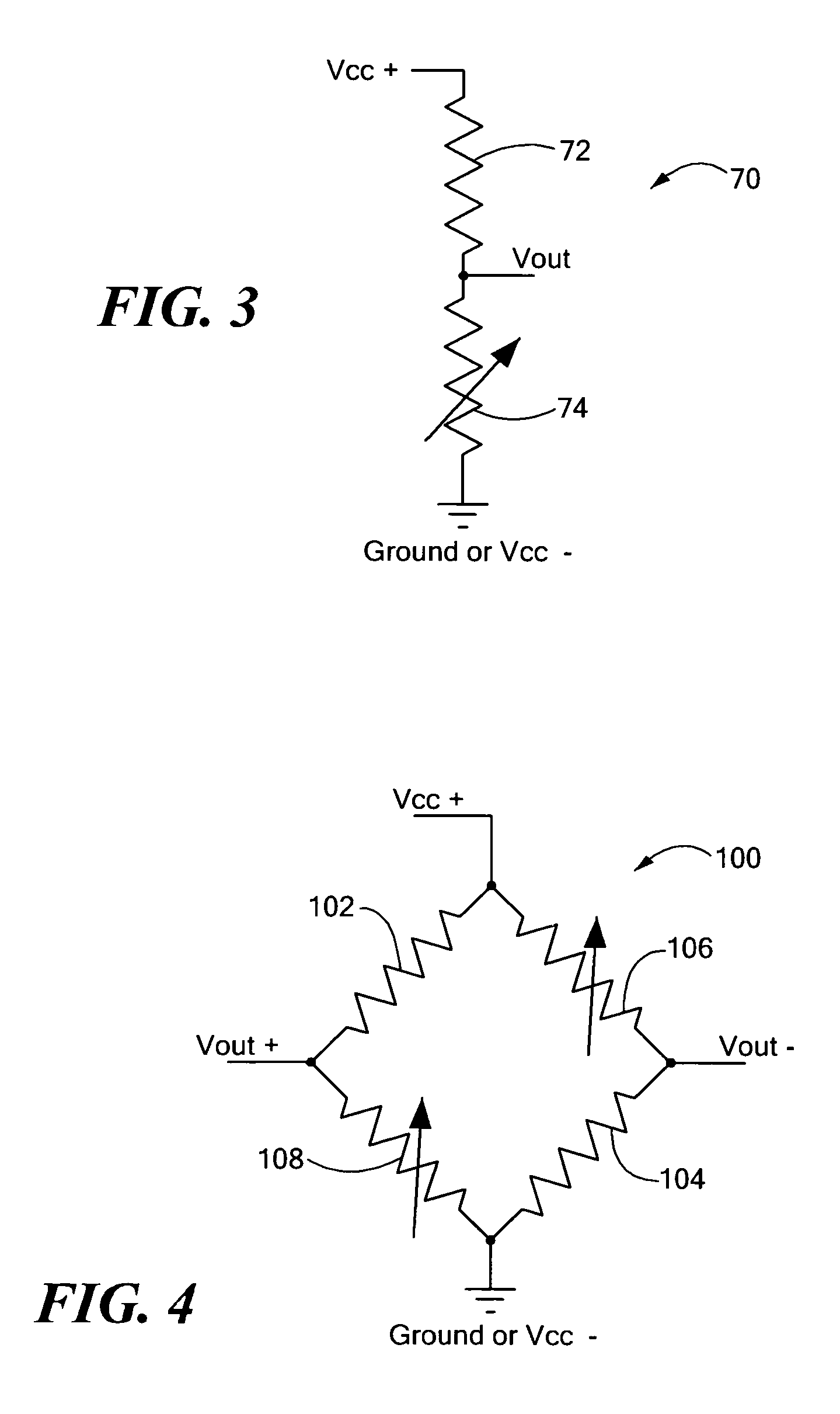Resistor having a predetermined temperature coefficient
a technology of resistor and temperature coefficient, which is applied in the field of resistors, can solve the problems of adversely affecting the output voltage signal of resistor dividers or wheatstone bridges
- Summary
- Abstract
- Description
- Claims
- Application Information
AI Technical Summary
Benefits of technology
Problems solved by technology
Method used
Image
Examples
Embodiment Construction
[0023]Before describing the resistor of the present invention, some introductory concepts and terminology are explained. As used herein, the term “disposed over” is used to refer to a relative placement, without suggesting a requirement for up or down orientation. For example, a first layer in combination with a second layer disposed over the first layer is not meant to require that the second layer be above the first layer. Merely by flipping the above-described combination, it can be seen that the second layer can be either above or below the first layer. The term “disposed over” also does not suggest a requirement for physical contact. For example, the above-described first and second layers need not be touching.
[0024]Referring to FIG. 2, an exemplary resistor 50 having a predetermined temperature coefficient is provided as a material stack including an antiferromagnetic layer 52, a first pinned layer 54, a non-magnetic layer 56, and a second pinned layer 58. The antiferromagneti...
PUM
 Login to View More
Login to View More Abstract
Description
Claims
Application Information
 Login to View More
Login to View More - R&D Engineer
- R&D Manager
- IP Professional
- Industry Leading Data Capabilities
- Powerful AI technology
- Patent DNA Extraction
Browse by: Latest US Patents, China's latest patents, Technical Efficacy Thesaurus, Application Domain, Technology Topic, Popular Technical Reports.
© 2024 PatSnap. All rights reserved.Legal|Privacy policy|Modern Slavery Act Transparency Statement|Sitemap|About US| Contact US: help@patsnap.com










